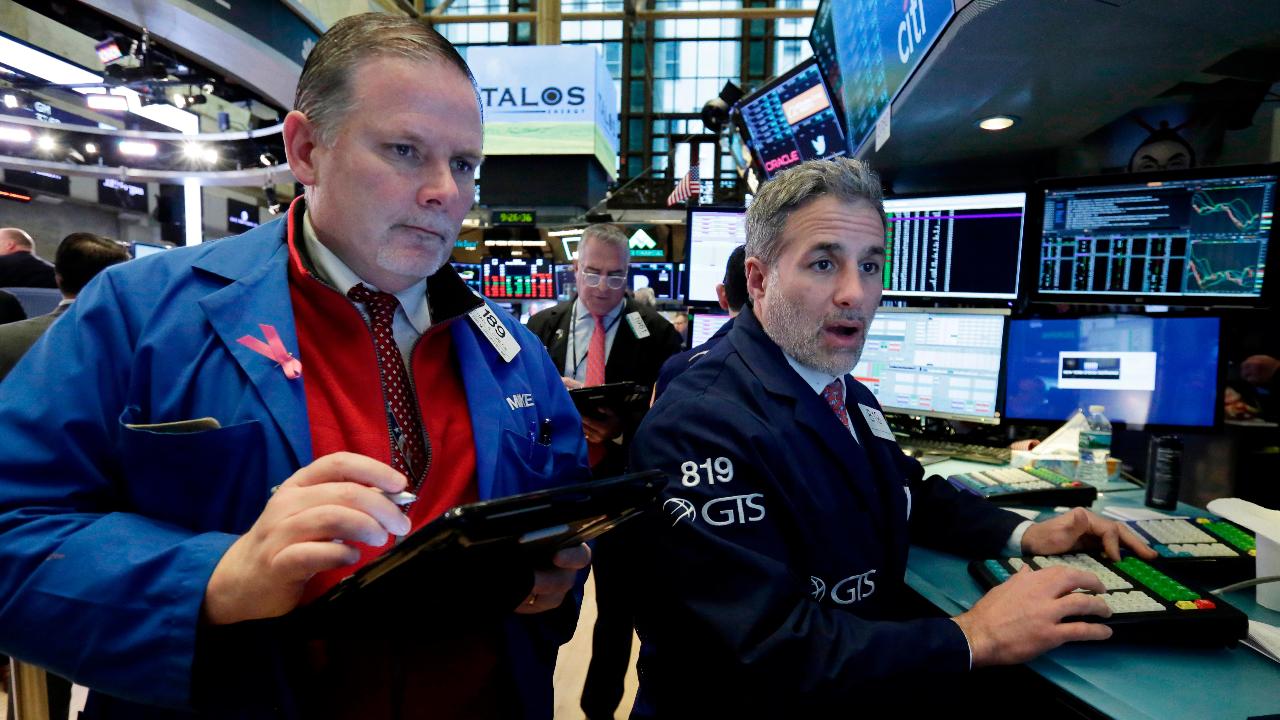Midterm elections usually give stocks pause in September, but pave way for later gains
After continuing to brush off high-decibel trade spats between the U.S. and its global trading partners as well as PresidentTrump's legal woes, the bull market's next challenge might come from the ballot box.
"Markets will be closely watching the upcoming midterm elections as shifts in the balance of power in Washington could have meaningful implications for fiscal policy and foreign relations," Niladri Mukherjee, director of portfolio strategy in the Chief Investment Office at Merrill Lynch and U.S. Trust, said in a note.
As with those other tangles, however, it isn't clear that the midterm congressional elections on Nov. 6, which could conceivably see Republicans lose control of the House and, though less likely, the Senate, would be enough to derail the bull market.
A quick look at historical performance shows that stocks often see rough sledding in the September of years that feature midterm elections. Analysts usually chalk it up to uncertainty, since midterms typically see the incumbent president's party lose seats. That same look at historical performance shows that stocks tend to do just fine as Election Day nears and in the aftermath of the vote, regardless of the outcome, as uncertainty begins to fade.
Analysts led by Keith Parker at UBS note that the S&P 500 has rallied an average of 14.5% from the end of August to the end of March around midterm elections (see chart above). That includes a rocky start marked by a median decline of 1.4 percent from the end of August through early October followed by rally through year-end and into the next year. Moreover, the rally in equities around midterm elections has been much stronger than the average returns seen in all other years.
Taking a more short-term approach, Binky Chadha, chief strategist at Deutsche Bank, noted that the three-month period running from a month ahead to two months after the election has produced a median 8 percent gain. And that includes only one decline, a 4 percent drop in 1978, over that period in the last 21 midterm years.
That's all encouraging for market bulls. But as the analysts caution, history is only a guide. Moreover, it isn't clear that the performance is necessarily all about politics and uncertainty.
While Chadha looked at midterm years stretching back 80 years, that's a sample of just 21 elections, which warrants caution when it comes to interpreting correlations, he said. In fact, he suspects the performance has more to do with the coincidence of other traditional drivers, such as growth and earnings.
Chadha noted that S&P 500 returns around midterms have carried a 76 percent correlation with changes in the Institute for Supply Management's activity index in the six-month period surrounding Election Day.
"This suggests that it was growth and not the midterm elections per se that was the key driver of the rallies," he said.
Seasonal factors also provide a tailwind in the three-month period around midterms. After controlling for growth and seasonality, the magnitude of the performance attributable to the elections in the October-to-December period during midterm years is smaller than first appears and is more likely on the order of 0.5 percent to 2.5 percent, he said.
Meanwhile, the policy implications of the election can't be ignored.
"The president's party has historically not fared well during midterm elections, and the results could affect the likelihood of certain pro-growth measures such as the so-called Tax Reform 2.0, which could include making individual tax cuts permanent and create new incentives for retirement savings and research and development," said Mukherjee.
Others argue that Democratic majorities could make for more confrontation, including government shutdowns, investigations into Trump administration activities and even the threat of impeachment, which could unsettle markets, at least temporarily.
But Mukherjee and others also argue that a change of control in one or both chambers could be a positive, offering a counterweight to the White House's trade policies.
With Trump's signature tax cut and fiscal package already enacted, the midterms "could act as a check on market/economy-unfriendly rhetoric and actions by the Trump administration, particularly as it gets closer to the elections," Parker said.
And if the Democrats take the House, it could provide a check on presidential "overreach" on trade, he said.
A flurry of action on the trade front, including reports Trump is set to press ahead with tariffs on an additional $200 billion of Chinese imports, a tentative agreement with Mexico and inconclusive talks with Canada on a revamped North American Free Trade Agreement, came as Wall Street logged another weekly gain.
The S&P 500 logged a 0.9 percent weekly advance, bringing its August rise to 3 percent. On Thursday, the S&P and the Nasdaq Composite broke a four-day run of record closes. The Nasdaq Composite logged a 5.7 percent monthly rise, while the Dow industrials advanced 2.2 percent.
The holiday-shortened week ahead will be a busy one for Federal Reserve officials, including public appearances by Minneapolis Fed President Neal Kashkari and Atlanta Fed President Raphael Bostic on Monday; New York Fed President John Williams on Thursday; and Boston Fed President Eric Rosengren, Cleveland Fed President Loretta Mester, and Dallas Fed President Robert Kaplan on Friday.
It will also be a heavy week for economic data, with highlights including the Institute for Supply Management's manufacturing index on Tuesday and July trade deficit figures on Wednesday. The main event will likely be August jobs data on Friday.




















